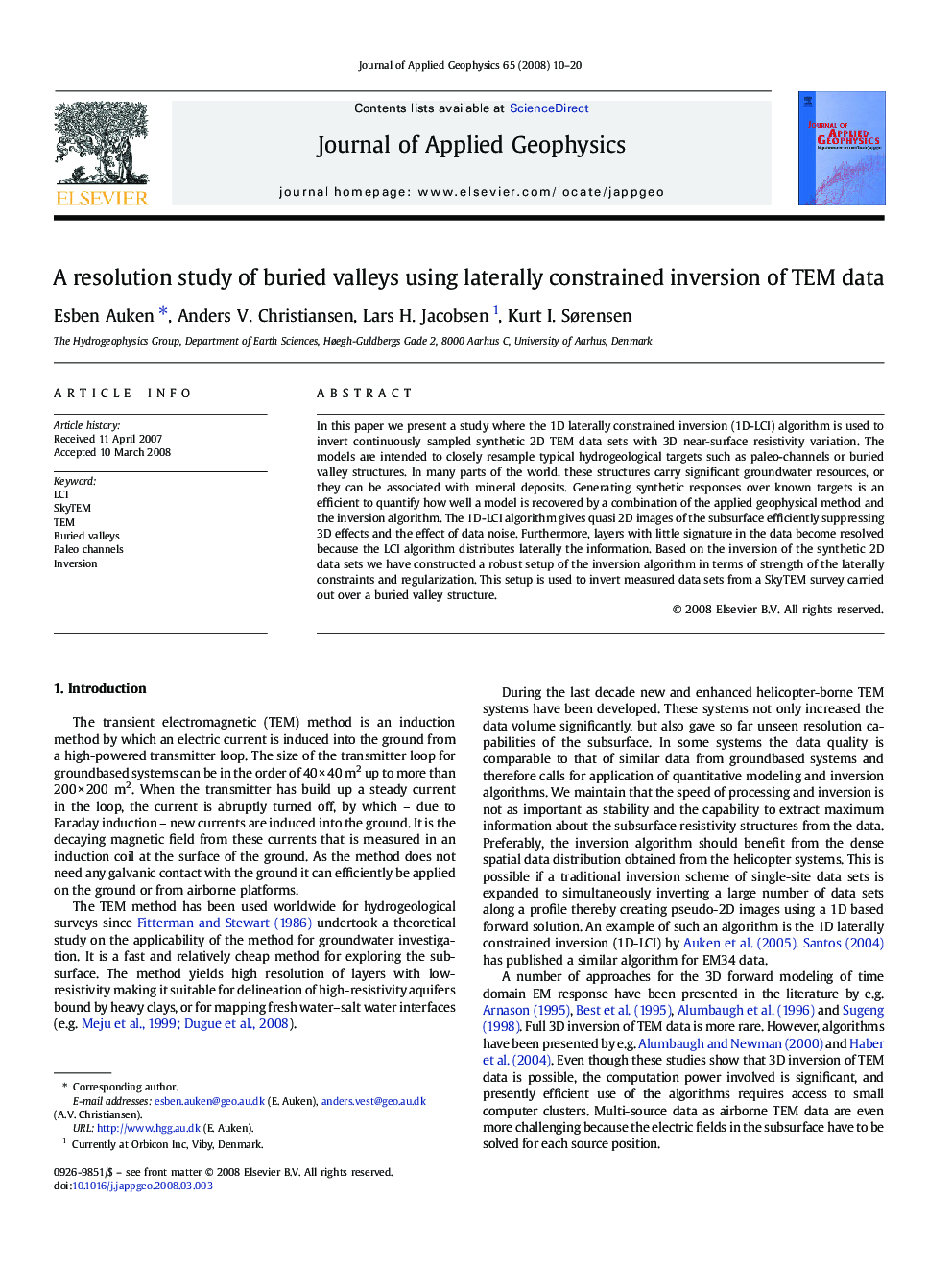| Article ID | Journal | Published Year | Pages | File Type |
|---|---|---|---|---|
| 4740887 | Journal of Applied Geophysics | 2008 | 11 Pages |
In this paper we present a study where the 1D laterally constrained inversion (1D-LCI) algorithm is used to invert continuously sampled synthetic 2D TEM data sets with 3D near-surface resistivity variation. The models are intended to closely resample typical hydrogeological targets such as paleo-channels or buried valley structures. In many parts of the world, these structures carry significant groundwater resources, or they can be associated with mineral deposits. Generating synthetic responses over known targets is an efficient to quantify how well a model is recovered by a combination of the applied geophysical method and the inversion algorithm. The 1D-LCI algorithm gives quasi 2D images of the subsurface efficiently suppressing 3D effects and the effect of data noise. Furthermore, layers with little signature in the data become resolved because the LCI algorithm distributes laterally the information. Based on the inversion of the synthetic 2D data sets we have constructed a robust setup of the inversion algorithm in terms of strength of the laterally constraints and regularization. This setup is used to invert measured data sets from a SkyTEM survey carried out over a buried valley structure.
